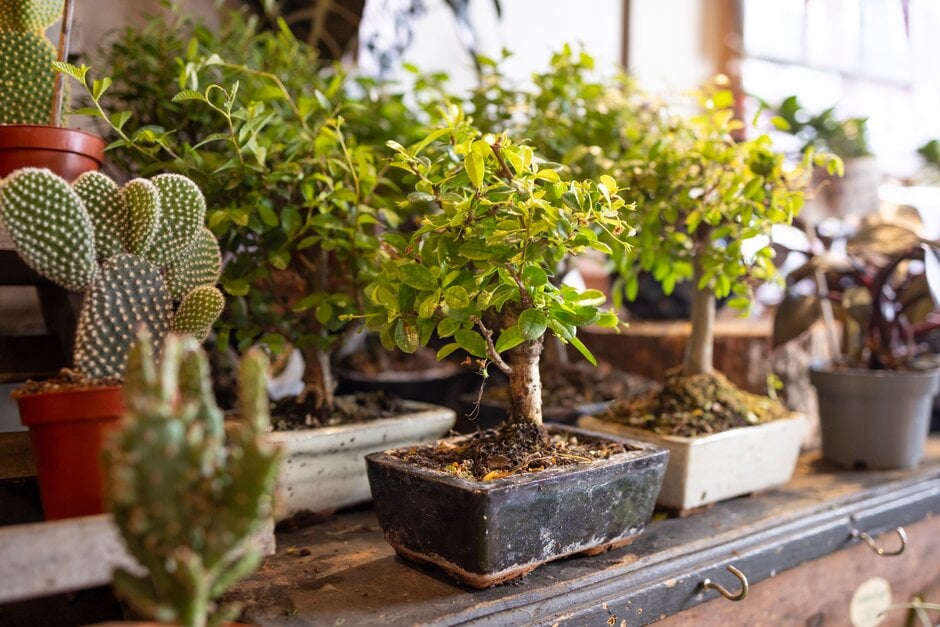Carmona
A genus of subtropical, fast-growing, evergreen shrubs with textured, thick, greyish-brown trunks and glossy, lobed dark green foliage which in its natural habitat can reach a height or around 3m. Small, fragrant white flowers appear all year round followed by small, green, red or black fruits. Cultivated as indoor bonsai trees due to their small stature and interesting features

Size
Ultimate height
1.5–2.5 metresTime to ultimate height
2–5 yearsUltimate spread
0.1–0.5 metresGrowing conditions
Moisture
Moist but well–drainedpH
AcidColour & scent
| Stem | Flower | Foliage | Fruit | |
| Spring | White | Green | Green Red Black | |
|---|---|---|---|---|
| Summer | White | Green | Green Red Black | |
| Autumn | White | Green | Green Red Black | |
| Winter | White | Green | Green Red Black |
Position
- Full sun
Aspect
East–facing or South–facing or West–facing
Exposure
Sheltered Hardiness
H1CBotanical details
- Family
- Boraginaceae
- Native to GB / Ireland
- No
- Foliage
- Evergreen
- Habit
- Bushy
- Name status
Correct
How to grow
Cultivation
Grow indoors in a bright, sheltered location in slightly acidic, free-draining, bonsai compost. You can make your own bonsai compost with peat-free compost, sharp sand or grit, peat-free John Innes 3 and slow-release fertiliser. Water when required. See bonsai cultivation for further advice
Propagation
Propagate by seeds or cuttings in summer
Suggested planting locations and garden types
- Architectural
- Houseplants
- Conservatory and greenhouse
Pruning
Prune regularly to encourage dense growth
Pests
May be susceptible to red spider mite, scale insects and glasshouse whitefly
Diseases
Generally disease free, but may be susceptible to fungal diseases
Get involved
The Royal Horticultural Society is the UK’s leading gardening charity. We aim to enrich everyone’s life through plants, and make the UK a greener and more beautiful place.